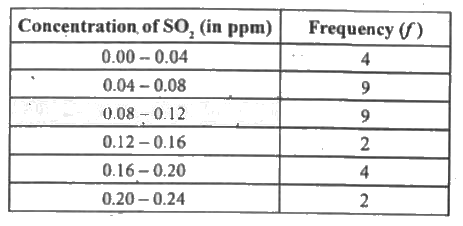Complete Solutions to Exercise 13.1 of chapter STATISTICS of Class 10 book with complete answers and questions
| Class 10 | MATHS |
| Chapter | STATISTICS |
| CPC CAMBRIDGE PUBLICATION | Exercise 13.1 |
| Number Of Questions | 9 |
| Academic Year | 2023-24 |
A survey was conducted by a group of students as a part of their environment awareness programme, in which they collected the following data regarding the number of plants in 20 houses in a locality. Find the mean number of plants per house.

Which method did you use for finding the mean, and why?
View SolutionConsider the following distribution of daily wages of 50 workers of a factory.

Find the mean daily wages of the workers of the factory by using an appropriate method.
View SolutionThe following distribution shows the daily pocket allowance of children of a locality. The mean pocket allowance is Rs 18. Find the missing frequency f.
View SolutionThirty women were examined in a hospital by a doctor and the number of heartper minute were recorded and summarized as follows. Find the mean heart beats per minute for these women, choosing a suitable method.

View SolutionIn a retail market, fruit vendors were selling mangoes kept in packing boxes. These boxes contained varying number of mangoes. The following was the distribution of mangoes according to the number of boxes.

Find teh mean number of mangoes kept in a packing box. Which method of finding the mean did you choose?
View SolutionThe table below shows the daily expenditure on food of 25 households in a locality.

Find the mean daily expenditure on food by a suitable method.
View SolutionTo find out the concentration of `SO_(2)` in the air (in parts per million, i.e., ppm), the data was collected for 30 localities in a certain city and is presented below:

Find the mean concentration of `SO_(2)` in the air.
View SolutionA class teacher has the following absentee record of 40 students of a class for the whole term. Find the mean number of days a student was absent.

View SolutionThe following table gives the literacy rate (in percentage) of 35 cities. Find the mean literacy rate

View Solution
Exercise 13.1 questions and complete solutions for chapter STATISTICS of CAMBRIDGE MATHS (KANNADA ENGLISH) of Class 10